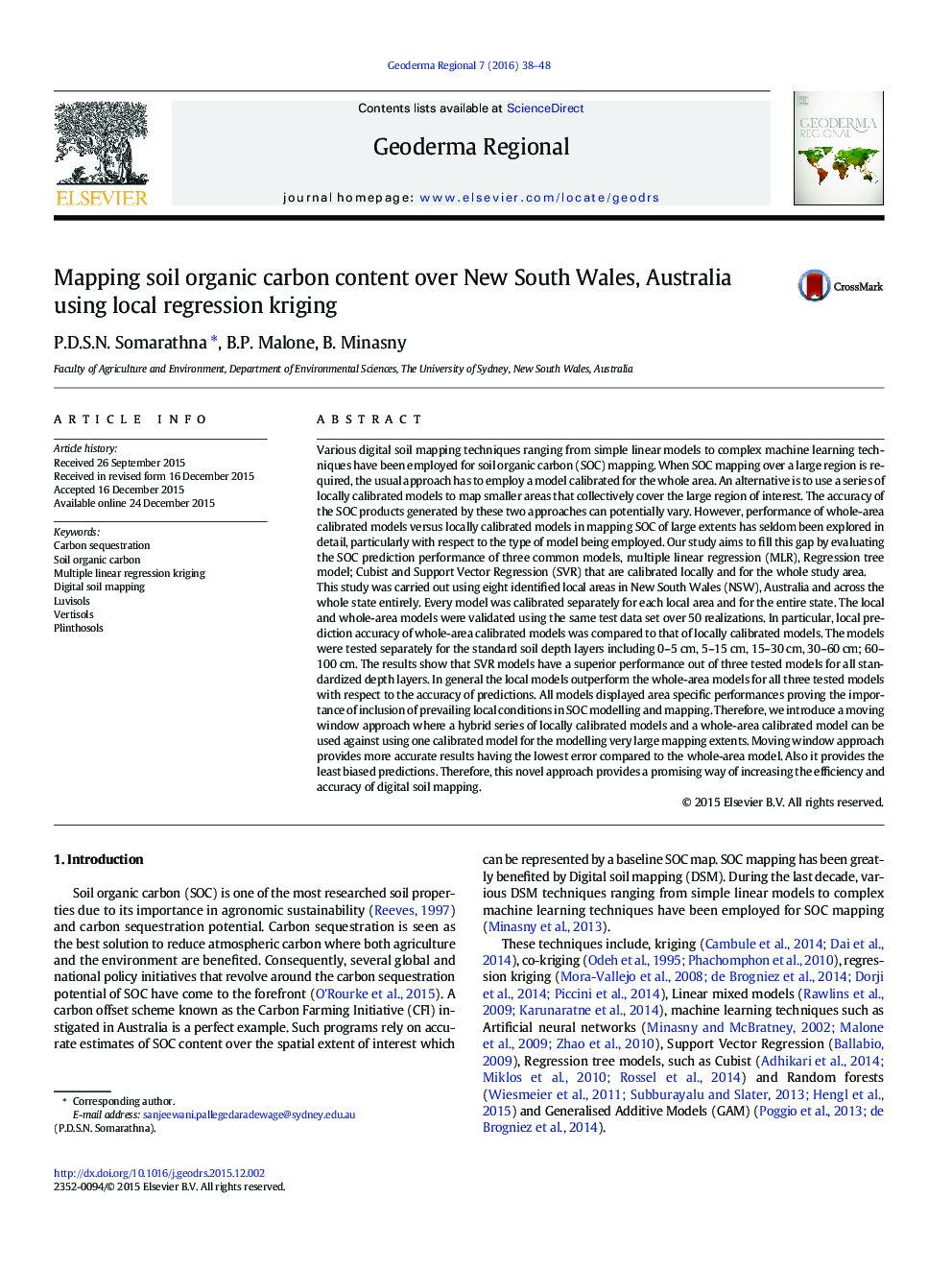| کد مقاله | کد نشریه | سال انتشار | مقاله انگلیسی | نسخه تمام متن |
|---|---|---|---|---|
| 4480756 | 1316743 | 2016 | 11 صفحه PDF | دانلود رایگان |
• Performance of SOC mapping models depends on model type, depth and mapping extent.
• MLR, Cubist and SVR models are equally sensitive to local conditions.
• Area specific unaccounted covariates could partly explain this local sensitivity.
• A hybrid moving window approach can improve the accuracy and efficiency of DSM.
Various digital soil mapping techniques ranging from simple linear models to complex machine learning techniques have been employed for soil organic carbon (SOC) mapping. When SOC mapping over a large region is required, the usual approach has to employ a model calibrated for the whole area. An alternative is to use a series of locally calibrated models to map smaller areas that collectively cover the large region of interest. The accuracy of the SOC products generated by these two approaches can potentially vary. However, performance of whole-area calibrated models versus locally calibrated models in mapping SOC of large extents has seldom been explored in detail, particularly with respect to the type of model being employed. Our study aims to fill this gap by evaluating the SOC prediction performance of three common models, multiple linear regression (MLR), Regression tree model; Cubist and Support Vector Regression (SVR) that are calibrated locally and for the whole study area.This study was carried out using eight identified local areas in New South Wales (NSW), Australia and across the whole state entirely. Every model was calibrated separately for each local area and for the entire state. The local and whole-area models were validated using the same test data set over 50 realizations. In particular, local prediction accuracy of whole-area calibrated models was compared to that of locally calibrated models. The models were tested separately for the standard soil depth layers including 0–5 cm, 5–15 cm, 15–30 cm, 30–60 cm; 60–100 cm. The results show that SVR models have a superior performance out of three tested models for all standardized depth layers. In general the local models outperform the whole-area models for all three tested models with respect to the accuracy of predictions. All models displayed area specific performances proving the importance of inclusion of prevailing local conditions in SOC modelling and mapping. Therefore, we introduce a moving window approach where a hybrid series of locally calibrated models and a whole-area calibrated model can be used against using one calibrated model for the modelling very large mapping extents. Moving window approach provides more accurate results having the lowest error compared to the whole-area model. Also it provides the least biased predictions. Therefore, this novel approach provides a promising way of increasing the efficiency and accuracy of digital soil mapping.
Journal: Geoderma Regional - Volume 7, Issue 1, March 2016, Pages 38–48
